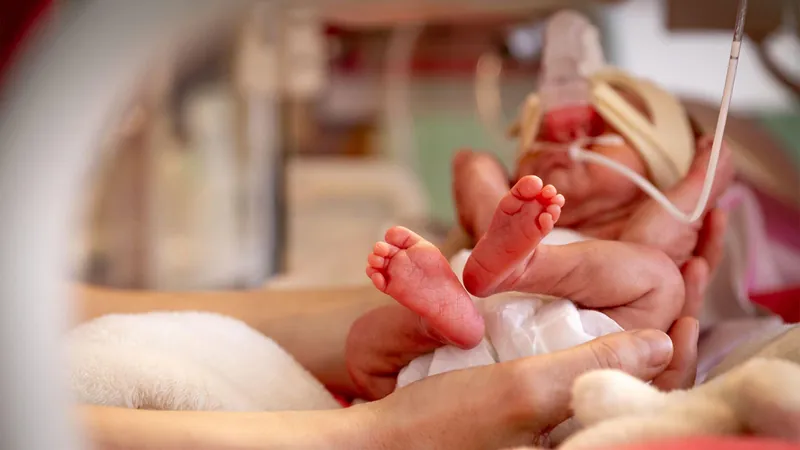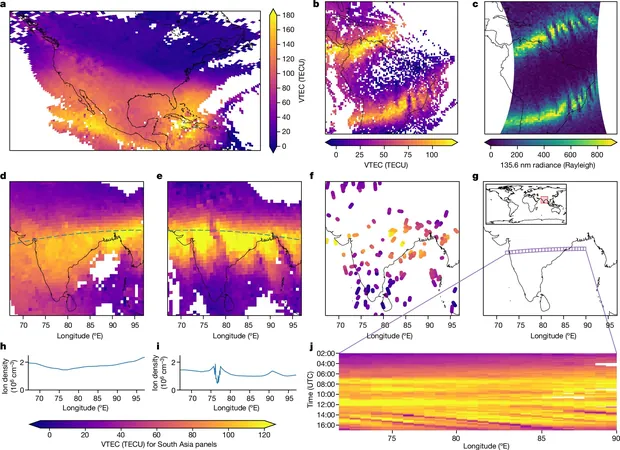
Shocking Findings: Early Intratracheal Budesonide Fails to Improve Outcomes for Extremely Preterm Infants!
2024-11-11
Author: Mei
Shocking Findings: Early Intratracheal Budesonide Fails to Improve Outcomes for Extremely Preterm Infants!
In a groundbreaking study, researchers discovered that early administration of intratracheal budesonide in extremely preterm infants did not significantly enhance survival rates free from bronchopulmonary dysplasia (BPD). The randomized clinical trial involved a significant cohort of 1,059 infants, and the results have sent ripples through the medical community.
Among the infants who received a combination of budesonide and surfactant therapy, only 25.6% achieved survival without a diagnosis of BPD. In comparison, 22.6% of those treated with surfactant alone experienced the same outcome. This outcome resulted in an adjusted risk difference of just 2.7%, which is not considered clinically meaningful, as highlighted by Dr. Brett Manley from The Royal Women's Hospital in Australia and his colleagues in the esteemed journal JAMA.
The study also evaluated survival rates at 36 weeks' postmenstrual age, revealing that 83.2% of the budesonide and surfactant group survived, although a staggering 69.3% were diagnosed with BPD. The surfactant-only group had a survival rate of 80.6%, with 71.9% diagnosed with the same condition. The data showed no substantial advantage for the budesonide therapy regarding survival or BPD incidence.
Dr. Manley and his research team pointed out that while their study did not yield clear benefits, it should not fully rule out the potential for minor clinical benefits. They referenced previous smaller trials that indicated a potential reduction in risk for BPD or mortality with the intratracheal budesonide treatment, suggesting that the current findings might warrant further exploration.
The trial, which is one of the largest and most comprehensive multicenter studies conducted to date, took place across 21 neonatal units in four different countries: Australia, New Zealand, Canada, and Singapore. Infants included in the study were born before 28 weeks of gestation and were mechanically ventilated or received noninvasive respiratory support soon after birth. The findings are particularly critical as they challenge the assumptions made based on smaller scale studies that had suggested budesonide might be beneficial.
Additionally, despite speculation that various baseline factors, such as the fraction of inspired oxygen (FIO2), might influence outcomes, the study did not find significant interactions between treatment and those baseline characteristics across the majority of infants.
Importantly, the researchers noted that no serious adverse effects were recorded from the administration of intratracheal budesonide, suggesting that while it may not provide the expected benefits, it also appears safe for this vulnerable population.
In an editorial tied to the study, Dr. Erik Jensen from Stanford University reflected on the sobering nature of these findings. He emphasized the necessity of large-scale trials to determine the efficacy and safety of treatment options in neonatology effectively. The disappointing outcomes serve as a reminder of the complexities involved in treating extremely preterm infants, where treatments that may have shown promise in smaller trials do not always translate into larger populations.
In conclusion, the research adds to the growing body of evidence in pediatric medicine that reinforces the importance of rigorous scientific validation before adopting therapies widely. The ongoing exploration of intratracheal budesonide’s role may yet uncover its potential, but for now, the focus remains on finding effective ways to combat BPD in these high-risk infants. As the search for solutions continues, the clinical community watches closely for emerging data.



 Brasil (PT)
Brasil (PT)
 Canada (EN)
Canada (EN)
 Chile (ES)
Chile (ES)
 España (ES)
España (ES)
 France (FR)
France (FR)
 Hong Kong (EN)
Hong Kong (EN)
 Italia (IT)
Italia (IT)
 日本 (JA)
日本 (JA)
 Magyarország (HU)
Magyarország (HU)
 Norge (NO)
Norge (NO)
 Polska (PL)
Polska (PL)
 Schweiz (DE)
Schweiz (DE)
 Singapore (EN)
Singapore (EN)
 Sverige (SV)
Sverige (SV)
 Suomi (FI)
Suomi (FI)
 Türkiye (TR)
Türkiye (TR)